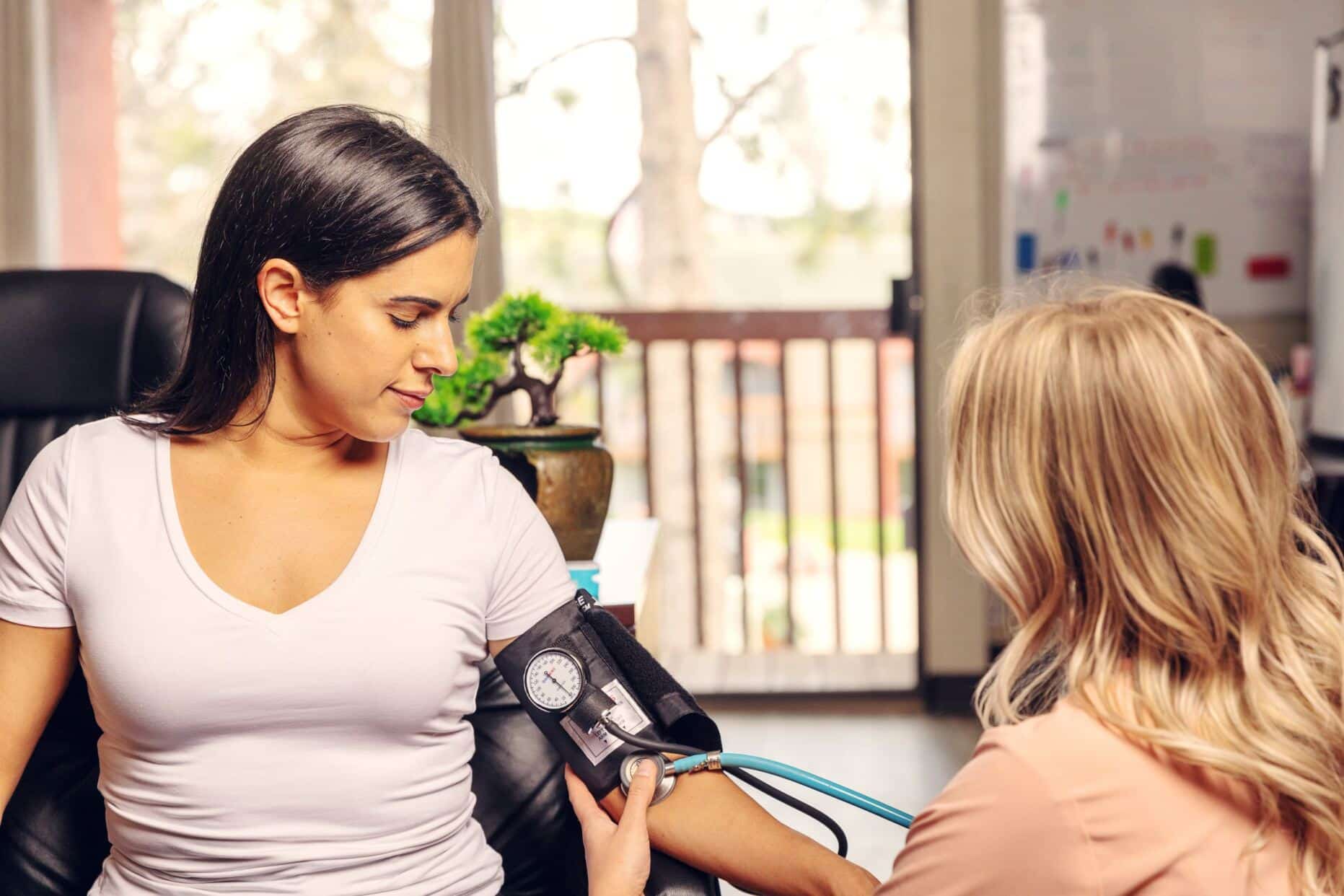Two of the most prevalent mental health issues affecting millions of people in the United States today are substance use disorder and eating disorders. According to the Surgeon General’s Report on Alcohol, Drugs, and Health over 27 million individuals in the U.S. are using illegal substances or prescription drugs. This is equivalent to almost a quarter of the adolescent and adult population. The eating disorder statistics are just as problematic considering that at least 30 million individuals are believed to be battling some form of this disorder.
Apart from negatively affecting millions of people in the country, you may think that the two are completely separate public health concerns that need to be addressed independently. While the two conditions may appear unrelated, several research studies revealed how addiction and eating disorders are connected.
Types of Eating Disorders
Eating disorders are serious illnesses generally characterized by a considerable disturbance in one’s eating behavior. People who suffer from this mental health condition usually spend their waking moments obsessing about food, body shape, and weight. Eating disorders have many types, some of the most common ones include the following:
Binge Eating Disorder
Binge eating disorder (BED) is the type of eating disorder most common in the U.S., particularly among women. Although BED has only been officially acknowledged as a formal diagnosis in the 2013 revision of the DSM-5, it is striking that about 2.8 million individuals have already been affected by this disorder in the U.S. alone. Note that the number of BED patients is equivalent to almost thrice the combined number of people with anorexia and bulimia. BED is characterized by excessive eating of food in a single sitting. People with BED experience powerlessness to control their food consumption during episodes of bingeing. Feelings of guilt and shame usually follow once the bingeing period is done.
Bulimia Nervosa
Bulimia nervosa is another eating disorder that is common to women. It is estimated that 1.5 percent of American women experience this type of disorder in their lifetime. As with binge eating disorder, people with bulimia also tend to lose their control and consume large amounts of food during their binge eating episodes. Unlike people with BN who simply feels guilty after bingeing, bulimic individuals try to compensate for their actions by getting rid of what they eat in an unhealthy way such as self-induced vomiting, excessive use of laxatives, etc.
Anorexia Nervosa
Anorexia nervosa is arguably the most popular eating disorder especially after famed singer Karen Carpenter died because of the disorder. Statistics show that 0.9 percent of American women have fought with anorexia during their life. Anorexic individuals tend to believe that they are overweight even though they are already extremely underweight. Considering their irrational fear of gaining weight, anorexics overly restrict their food intake causing them to become severely malnourished.
Avoidant or Restrictive Food Intake Disorder
Avoidant or restrictive food intake disorder (ARFID) is another recently recognized eating disorder wherein boys appear to be of higher risk than girls. While the exact number of people with ARFID is still unavailable, the National Association of Anorexia Nervosa estimates that the disorder is affecting about 3 to 5 percent of children.
People with ARFID developed some type of problem with eating (e.g. difficulty digesting certain foods, lack of appetite, disliking certain types of food) when they were still young and did not resolve this even when they became adults. Because of their eating issue, those with ARFID tend to lack proper nutrition and experience significant weight loss, among others.
Pica
Pica is an eating disorder that is characterized by eating different types of substances or items that are not generally considered food and have no nutritional value such as clay, cotton, dirt, hair, or paint chips for at least a month. While there are no available statistics on the prevalence rates of pica among the general population, research shows that the prevalence rates of this eating disorder among people who are institutionalized range from 4 percent to as high as 26 percent.

Are you or your loved suffering from addiction?
Now is the time to seek help. Call us today.
Why do Eating Disorders Occur?
Eating disorders are triggered by a variety of reasons such as interpersonal and social factors like troubled home, an experience of abuse, being heavily teased or bullied because of weight, and social pressures. Oftentimes, however, eating disorders are caused by psychological factors. Oftentimes, however, eating disorders are caused by psychological factors.
- Having low self-esteem
- Feelings of not being enough (sense of inadequacy)
- Lack of control
- Depression
- Anxiety
- Loneliness
- Anger
Impact of Eating Disorder
Eating disorders should not be taken lightly and must be immediately treated as it can cause serious and even irreversible damage including death. Eating disorders particularly binge eating, bulimia, and anorexia nervosa can cause some of the biological or health consequences.
- Cardiovascular issues such as cardiac arrest and irregular heartbeat
- Kidney failure
- Damage to the liver
- Significant reduction of muscle mass
- Permanent loss of bone mass causing brittle bones, osteoporosis, osteopenia, or dowager’s hump
- Dental issues
- Gastrointestinal problems such as rupture of esophagus, gastritis, and damage to the stomach lining
- Malnutrition
- Lack of anal and bladder voluntary control
- Cold extremities
- The weakening of the immune system
- Dry and blotchy complexion
- Infertility among women
- Helplessness
- Feelings of guilt and shame
- Self-doubt
- Anxiety
- Compulsive habits
- Feelings of isolation and loneliness
Eating Disorders and Substance Use Disorder
While eating disorders may appear as completely unrelated issues, these two conditions have significant similarities and are closely linked. According to the report of the National Center on Addiction and Substance Use Disorder at Columbia University, as high as 50% of people suffering from an eating disorder abuse alcohol and illegal substances which is 41% higher compared with that of the general population. Note that caffeine, alcohol, cocaine, heroin, and over-the-counter-drugs like laxatives, diuretics, and suppressants are the most commonly abused substances by individuals with eating disorders.
Interestingly, findings also revealed that as much as 35% of alcohol and substance use disorderrs also suffer from an eating disorder. Again, this is much higher than the prevalence rate of eating disorders among the general population which is only 1% to 3%. Apart from the significant overlap between the two disorders as evidenced by the numbers above, eating disorders and addiction also exhibit several common characteristics:
- Both are most likely to occur among individuals who have a history of sexual or physical abuse as well as those with low self-esteem, anxiety, and depression.
- Both can be influenced by parents, social pressures, and unhealthy modeling of celebrities.
- Both share the following symptoms:
- Constant preoccupation of the substance of choice (food or alcohol/drugs) leading to withdrawal to other interests
- Obsessive cravings
- Compulsive habits
- Failure in stopping the detrimental habit despite numerous attempts
- Continued engaging in the behavior despite knowing its harmful effects
- Attempt to hide the problem from everyone
- Both have similar neurological effects.
- Both are associated with certain mental illnesses such as mood disorders.
- Both are chronic and can lead to death.
Treating Eating Disorders and Substance Use Disorder
For people suffering from both substance use disorder and eating disorders, it is essential that their treatment plan recognizes the relationship between the two conditions and the importance of addressing them simultaneously. Given how closely similar the diagnostic criteria for substance use disorder and eating disorders are with each other, the following addiction-based treatment methods are commonly used to help people suffering from both substance use disorder and an eating disorder:
12-Step Treatment Model
The 12-step treatment model is a technique patterned after the Alcoholics Anonymous, a self-help group that assists people with alcohol-related issues achieve long-term sobriety. This model includes a 12-step process to recovery and highlights the importance of a supportive network of friends and fellow recovering addicts.
The basic principles of the 12-step approach can also be applied and be advantageous to people with eating disorders particularly the need to admit that there is a problem, the necessity of examining past mistakes and adopting a healthy and different lifestyle. Individuals with eating disorders can also find comfort, consolation, and inspiration when they associate with people who suffered from a similar condition but have successfully recovered.
Cognitive-Behavior Therapy
Cognitive-Behavior Therapy (CBT) is another treatment technique commonly used in addiction rehab that can be advantageous for people with eating disorders as well. CBT is used so that drug-addicted individuals can recognize and learn to correct their negative thought patterns. Note that how people think affects their behavior and actions.
Considering how CBT works, this form of therapy can help someone with an eating disorder to rectify his or her distorted and harmful thought patterns about food and themselves. When he or she learns to do so, positive changes in emotions and behavior will soon follow.
Dialectical Behavior Therapy
Dialectical Behavior Therapy (DBT) is an offshoot of CBT. In DBT, substance use disorderrs are taught how to manage and regulate negative emotions and turn them into something positive. In the case of eating disorders, DBT can help patients learn how to cope with their emotional struggles in a healthier way.
Medical disclaimer:
Sunshine Behavioral Health strives to help people who are facing substance abuse, addiction, mental health disorders, or a combination of these conditions. It does this by providing compassionate care and evidence-based content that addresses health, treatment, and recovery.
Licensed medical professionals review material we publish on our site. The material is not a substitute for qualified medical diagnoses, treatment, or advice. It should not be used to replace the suggestions of your personal physician or other health care professionals.







